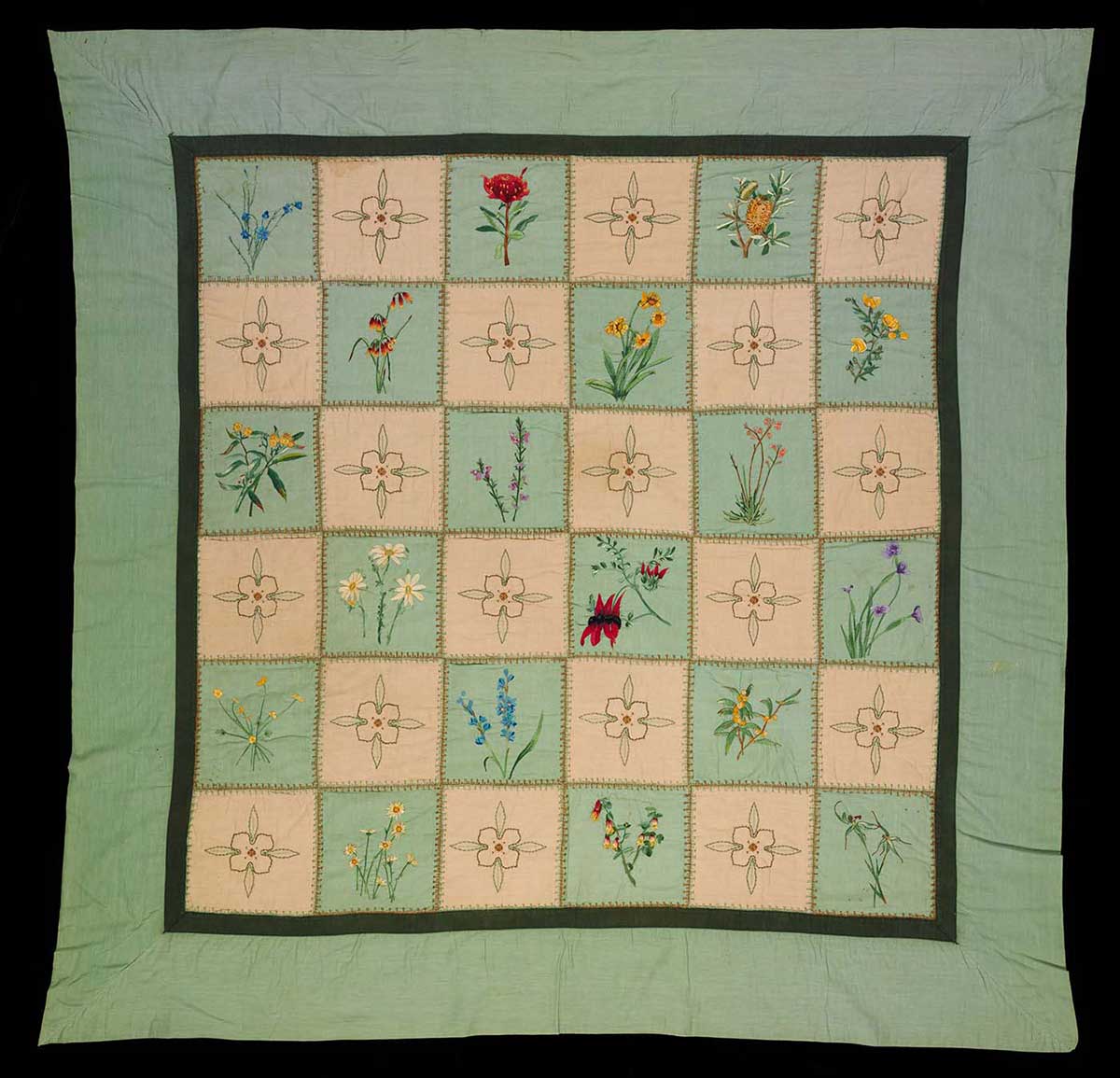Wildflowers quilt
This embroidered wildflowers quilt was made by 18-year-old Minetta (Nettie) Huppatz. It won Nettie and her needlework a ‘Very Highly Commended’ certificate at the 1933 Royal Adelaide Show. Nettie grew up on a dairy farm at Eurelia, an isolated town 300 kilometres north of Adelaide.
- Download wildflowers quilt study2.0 mb pdf [ PDF | 2.0 mb ]
Print this page on A3 paper for best results

Stitching and wondering
In a 1933 letter to the Adelaide Chronicle Nettie Huppatz wrote:
Often when I am stitching away at the quilt, I wonder how many more girls and women, perhaps hundreds of miles away from each other are working away at the same pattern.
Nettie later married and became Mrs McColive. Her work continues to attract attention from the quilting community.
Connecting people from isolated areas
This quilt demonstrates how agricultural shows helped to connect people from isolated rural communities, bringing together people with similar interests and pursuits.
By entering competitions or by judging or spectating, people from different parts of the country and community could come together to share stories, ideas and the latest news, whether it be about hobbies, crafts, grain or fruit production or raising livestock. This was especially important in the days before mass communication such as radio, television and the internet.
Importance of needlework
Needlework has been an important activity for women throughout Australian history. It was not always highly valued as an artistic skill because it was mainly done by women and seen as a domestic activity. As time has passed, the social role of this type of activity has become much better appreciated, especially the sense of community it offered for women who were otherwise isolated from each other.
Questions
What are some of the activities, crafts, or hobbies that are judged at agricultural shows?
Apart from the prestige of winning, what social functions might such competitions hold for the competitors?
What other activities, crafts or hobbies, apart from needlework, are traditionally seen as women’s work, and why?